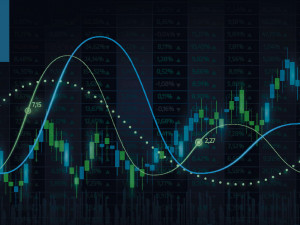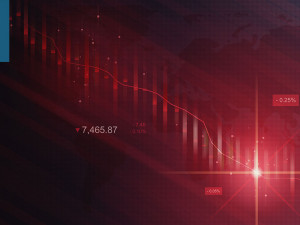
Everything turns south
Morning mid-market rates – The majors
14th June: Highlights
- Bank of England to hike rates as economy contracts!
- Powell’s choice is higher inflation or recession
- Inflation versus economic contraction attracts all manner of ideas
GBP – Industry, Manufacturing and Services beginning to contract
GDP contracted by 0.3% in April, while both manufacturing and industrial output also fell.
While it is too early to say that the economy is in free fall, there is little doubt now that Q3 may mark the beginning of a recession. Given the headwinds that the country still faces, it is possible that the slowdown in output could last until at least the end of the year.
There was a drag on economic activity created by the phasing out of Coronavirus vaccination programmes, but even if they still existed, GDP would only have been 0.1%. This shows that the real economy is slowing at a considerable rate.
With the Bank of England still committed to the fight to reduce inflation and the country seeing fuel prices rise every day, they will be faced with the unenviable task of throwing petrol on the fire.
Once the economy is back on its feet, which could easily be next year at the earliest, there will be significant recriminations regarding the Bank’s actions in the lead up to the recession.
No one has a crystal ball and Andrew Bailey cannot be expected to have prior knowledge of how quickly inflation grew, but the actions of the MPC were delayed, possibly, a misunderstanding of the effect of the exit from the pandemic, which is acceptable, while their belief that the rise in inflation was transitory in nature created a mistaken belief that it would correct itself within months.
Now, the Central Bank is committed to hiking interest rates at its meeting this week. The base rate of interest will reach 1%, its highest in more than a decade.
Historically, this is still lower than rates in the UK have been, but the economy will need to adjust to higher rates. The jury is still out on just how inflation will react to this, since the effect of higher rates of slowing the economy, which would be the normal effect, is already happening.
It may be that in six months’ time, should the price of fuel begin to fall, that commentators are discussing the first cut.
Today’s release of the May employment report will also set inflation alarm bells ringing.
It is expected that while there is good news economically that the claimant count continues to fall, average earnings will reach 7.6% when bonuses are included. It is ironic that while pay rises above 7% will add to inflation, they do not help living standards since inflation is eating away at pay packets.
The pound received a pounding yesterday from the poor data. It fell to a low of 1.2107, closing at 1.2136. Both are lows for the year.
Recommend our services and earn up to £75 per successful referral
USD – Essentials growing at as fast a rate as energy
The pessimism that is now becoming a significant factor around consumer confidence may simply be the normal reaction to the Fed appearing to be hiking rates constantly, which gives the impression that they are not sure about just how much is enough.
Ironically, this may be true. The most recent comments by the Federal Reserve Chairman point to him growing more hawkish by the day.
Inflation data published last week will have given the population a jolt, since they will believe that the rising cost of their home loans should be providing the desired effect.
Now with gasoline prices above $5 all they see are rising prices.
Markets are shuddering with recession fears, just as the FOMC, at its meeting this week, prepares to hike rates, by seventy-five basis points.
The press conference to be held by Jerome Powell following the interest rate decision will attract even closer inspection than it normally does. He will no doubt believe that his crusade against rising inflation needs to continue, but just how hawkish he is prepared to be in the current circumstances is unclear.
Commentators still see the chances of a recession at 50/50 with years of high profits and low interest rates having given the corporate sector something of a buffer, while households still have the remains of the covid support payments to fall back on if they have been sensible.
The dollar index is beginning to return to strength after a few weeks of consolidation.
Yesterday, it rose back above the 105 level for the first time in a month. It reached 105.28 and closed at 105.23.
Apart from the FOMC meeting, there is data due for release this week for retail sales as well as the housing market. Both will be significant indicators, but the Fed will clearly take centre stage.
EUR – Eurozone faces several threats, not just growth and prices
The Central Bank will need to be aware of the effect a hike will have on the interest burden that certain Eurozone members will face on their borrowings. That is, of course, if they can find anyone to buy their paper.
For some considerable time, the ECB has been not just a principal buyer of several nations’ paper, but the only buyer. That has meant that the natural order of Government bond markets has been distorted, since there has been no discernible competitive pricing.
There is little doubt that Italy, as an example, has been enjoying something of a free ride. It now faces the double shock of rising interest rates, with the addition that they will be expected to pay a significantly higher premium, to those who see the risk as acceptable.
Christine Lagarde may use such difficult scenarios to encourage her colleagues to raise rates by just twenty-five basis points.
Inflation is still a significant issue, the most important factor in the Union’s economy right now. The market has been supportive of the ECB so far, but if it begins to believe that the Bank’s reaction to rising prices is becoming wishy-washy, they will desert the entire region.
Germany will release inflation data for May today, with most analysts seeing it remaining at 8.7%. While that may be considered hopeful in some quarters, within the Bundesbank, it will be eyed with deep caution. In Frankfurt, the idea of inflation at close to 9% and the Central bank considering a hike of twenty-five basis points as risible.
The influential ZEW index will be released later this morning. In Germany, the index is expected to improve from -36.5 to -31, while for the Eurozone itself, it is expected to also improve from -29.5 to -24.3.
Yesterday, the euro fell to a low of 1.0399, closing at 1.0409. The single currency is not yet challenging its low for the year, which stands at 1.0349, but should the fed hike by seventy-five basis points tomorrow, widening further the gap between rates in the two economies, a test of parity may not be too far away.

About Alan Hill
Alan has been involved in the FX market for more than 25 years and brings a wealth of experience to his content. His knowledge has been gained while trading through some of the most volatile periods of recent history. His commentary relies on an understanding of past events and how they will affect future market performance.”



